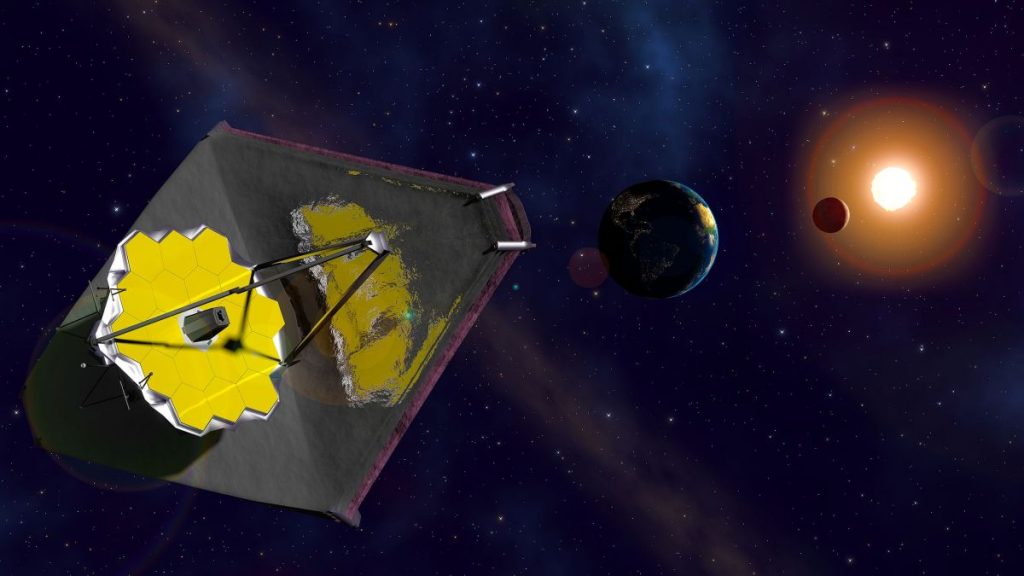The James Webb Space Telescope is halfway through getting its instrument modes checked out for science operations, which are expected to begin in mid-July.
The James Webb Space Telescope is fitted with four cutting-edge instruments, which will enable the $10 billion observatory to see the most distant, oldest galaxies, which formed in the early universe only a few hundred million years after the Big Bang, and study their chemical composition. These instruments have 17 science modes between them, and each science mode needs to be tested before the telescope can commence science operations in mid-July.
“As of today, 7 out of Webb’s 17 instrument modes are ready for science,” NASA said on Twitter (opens in new tab) Friday (June 17).
“Each mode has a set of observations and analysis that need to be verified,” Jonathan Gardner, the James Webb Space Telescope deputy senior project scientist at NASA’s Goddard Space Flight Center, explained in a blog post on May 12. “Some of the modes won’t be verified until the very end of commissioning,”
A detailed instrument mode “check-off” list is also available on the “Where is Webb” agency webpage.
Live updates: NASA’s James Webb Space Telescope mission
Related: How the James Webb Space Telescope works in pictures
Webb has four major instruments, each of which can observe the universe in several modes ranging from time series observations to observing multiple stars and galaxies at the same time.
Gardner said that for each of the 17 modes, the team selected a “representative example science target” that will be observed during the first year of Webb’s science operations, called Cycle 1.
“These are just examples,” Gardner added. “Each mode will be used for many targets, and most of Webb’s science targets will be observed with more than one instrument and/or mode.”
The full list of Cycle 1 observations is available at this website (opens in new tab) from the Space Telescope Science Institute in Baltimore, which runs Webb operations. The investigations span Webb’s major science objectives, which include everything from looking at very early galaxies, to examining planets, moons, asteroids and other objects in our solar system.
The telescope is in the homestretch of its commissioning period ahead of an expected July 12 release of the first operational images. (Webb officials are still keeping those first imaging targets secret.)
James Webb Space Telescope Instruments
The Near Infrared Camera (NIRCAM):
NIRCam will be crucial for accomplishing Webb’s flagship goal: detecting the light from the earliest stars and galaxies. It’s not just a simple infrared camera, but is fitted with some extra implements called coronographs. The coronographs will enable astronomers to block out the light of a star and look at what’s happening around it, which makes it great for discovering orbiting exoplanets.
The Near InfraRed Spectrograph (NIRSpec):
NIRSpec is the main tool for cracking the chemistry of the universe. It will split the light coming from the distant universe into spectra, revealing the properties of the observed objects, including their temperature, mass and chemical composition.
Because some of these objects are extremely distant and the light coming from them will be extremely faint, the James Webb Space Telescope, despite its giant mirror, will have to stare at them for hundreds of hours. To make those observations more efficient, NIRSPec will be able to observe 100 such distant galaxies at the same time.
“It basically lets you open little doors and let the light through from one galaxy, but then block off all the light from everything else,” said McCaughrean. “But you can open 100 doors at once, for example. So that’s very sophisticated and that’s never been flown in space.”
The Mid-Infrared Instrument (MIRI):
MIRI is a combination of a camera and a spectrograph, but unlike the previous two, it observes in the longer wavelengths of the mid-infrared part of the electromagnetic spectrum, which will make it a go-to instrument for everyone looking to study everything from comets and asteroids at the outskirts of the solar system to newly born stars and distant galaxies. The images of MIRI will be the most akin to those that turned the Hubble Space Telescope into a legend.
The Fine Guidance Sensor/Near Infrared Imager and Slitless Spectrograph (FGS/NIRISS):
FGS/NIRISS will also contribute to the detection of the first light, spot exoplanets and analyze their chemistry.
Follow Elizabeth Howell on Twitter @howellspace (opens in new tab). Follow us on Twitter @Spacedotcom (opens in new tab) and on Facebook (opens in new tab).

